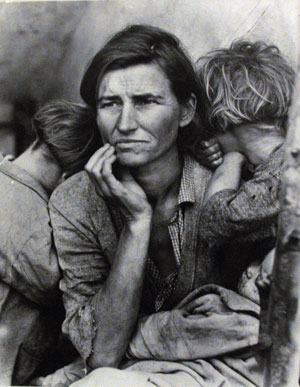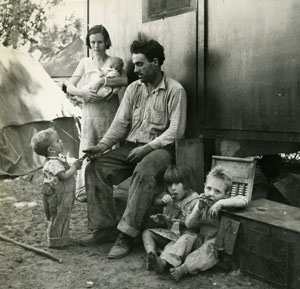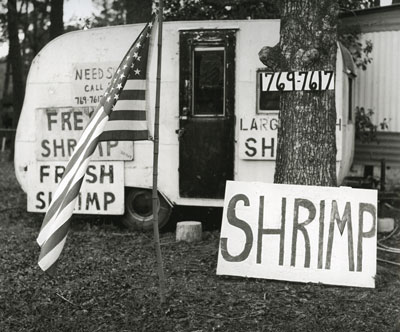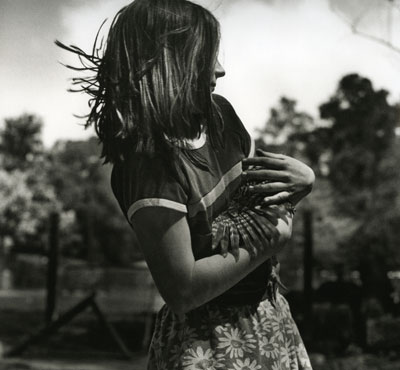On the Road: Dave Anderson, Rough Beauty; Farm Security Administration; Dorothea Lange

About the Exhibition
This exhibition is part of a year-long Columbia College-wide celebration of Beat culture and the 50th anniversary of the publication of Jack Kerouac’s novel, On the Road. The centerpiece of this larger project is the display of the original manuscript of On the Road, a 120-foot scroll that Kerouac continuously fed through his typewriter, on view at the College’s Book and Paper Center, 1104 S. Wabash, from October 3 through November 30, 2008. Check the Columbia College Chicago website for program details.
We have chosen to focus on the philosophical and personal results of travel…discovering the possibility of reinventing the self in transit to and from anywhere…
We have chosen to focus on the philosophical and personal results of travel: learning the difference between the real edges and the ideal, mostly fictional, center of America; discovering the possibility of reinventing the self in transit to and from anywhere; and learning how big this country really is in physical expanse and how very small it can be in individual cultural awareness. These are the central themes of Kerouac’s novel.
A model for and subtext of Kerouac’s travels in 1947 was the mass exodus of people from impoverished rural areas of the east and Midwest during the Great Depression just ten years before. The U. S. Government commissioned a group of photographers, under the Farm Security Administration, to document this stream of people moving west and their lives on both ends of the road. The museum recently acquired a large collection of this work. U.S. 66, which starts just blocks from the museum and ends in Los Angeles, was one of the main routes for this migration. What the economic refugees discovered, and what Jack Kerouac, the privileged Columbia University student learned was that that anybody who is bored or broke or dissatisfied with the culture they find themselves in, i.e.—Beat—can walk out to the nearest highway and stick their thumb out.
Part of this exhibition Dorothea Lange’s Depression work in detail, including the little known series of experiments leading up to her iconic image of the “Migrant Mother.”
Arguably the star of the Farm Security Administration was Dorothea Lange. Thanks to major gifts from her family, the museum has a wide spectrum of her work both during and after the Depression. Part of this exhibition celebrates those gifts and explores her Depression work in detail, including the little known series of experiments leading up to her iconic image of The Migrant Mother, who became the poster child for The New Deal.
Between 2003 and 2006 David Anderson made over fifty trips to Vidor, Texas, and photographed the town and its residents. This resulted in the book Rough Beauty. Vidor is a small community struggling with issues of extreme poverty and isolation in southeastern Texas. The town is reminiscent of an America unknown to them that unfolded in front of Kerouac, Neil Cassidy, Allan Ginsberg, William Borroughs and the rest of the people in On the Road as they drove and hitch hiked back and forth across it.
— Rod Slemmons
Image Gallery



